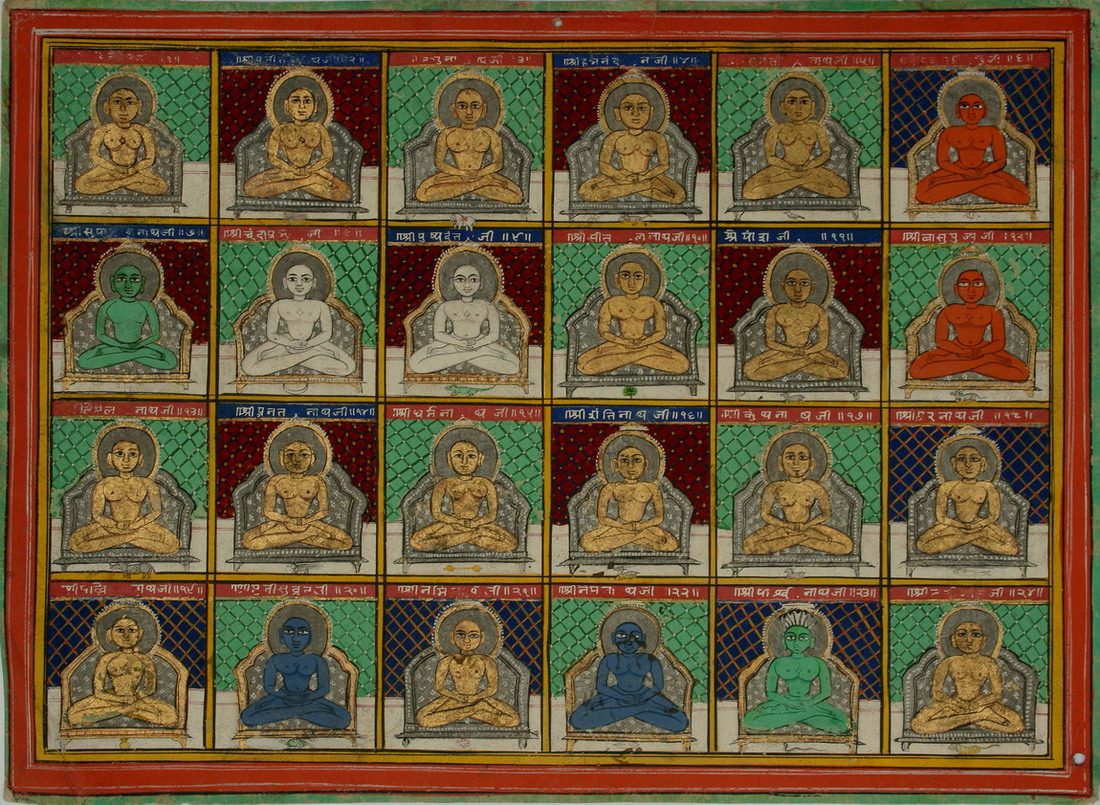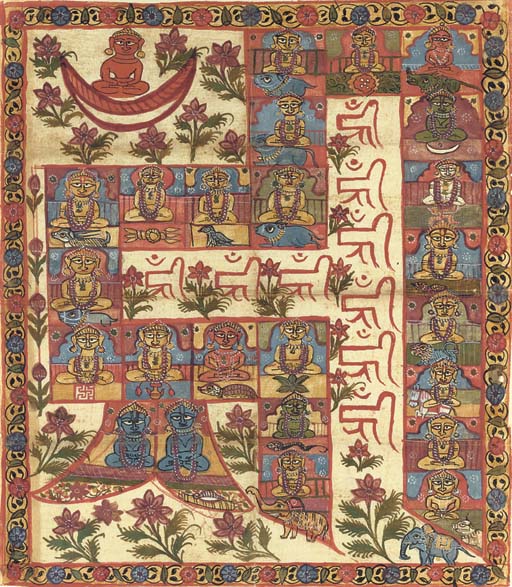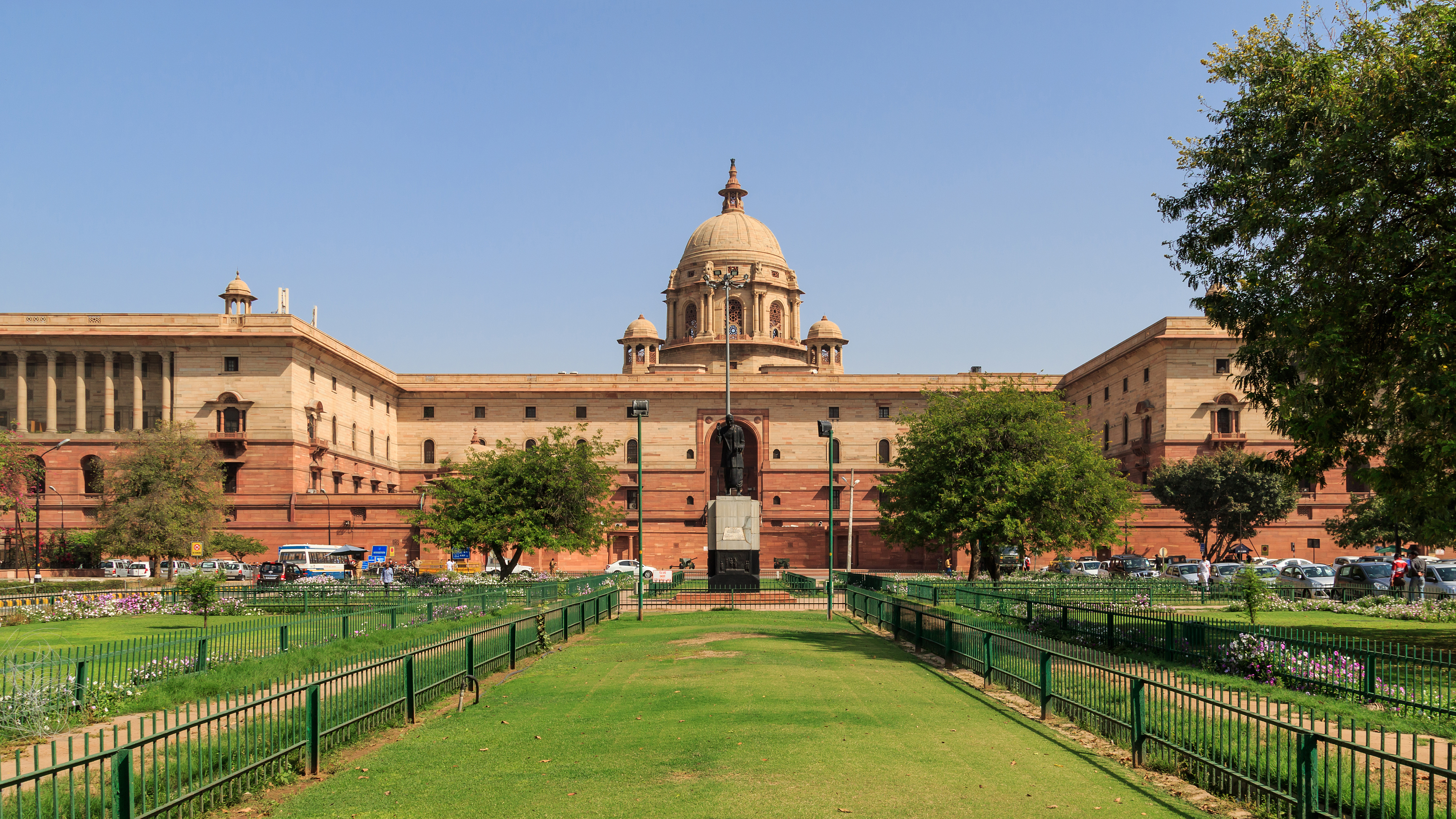|
Pushpadanta
In Jainism, Pushpadanta (), also known as Suvidhinatha, was the ninth Tirthankara of the present age ('' Avasarpini''). According to Jain belief, he became a siddha and an arihant, a liberated soul that has destroyed all of its karma. Biography Puṣpadanta bhagwan, also known as Suvidhinatha, was the ninth Tirthankara of the present age ('' Avasarpini''). According to Jain belief, they became a siddha and an arihant, a liberated soul that has destroyed all of its karma. Puṣpadanta bhagwan was born to King Sugriva and Queen Rama at Kakandi (modern Khukhundoo, Deoria, Uttar Pradesh) to the Ikshvaku dynasty. Their birth date was the fifth day of the Margshrsha Krishna month of the Vikram Samvat. Puṣpadant bhagwan was the ninth Tirthankara who re-established the four-part sangha in the tradition started by Rishabhanatha bhagwan. Pushpadanta prabhu is associated with Alligator emblem, Malli tree, Ajita Yaksha and Mahakali (Dig.) & Sutaraka (Svet.) Yakshi. See also *God ... [...More Info...] [...Related Items...] OR: [Wikipedia] [Google] [Baidu] |
Shikharji
Shikharji (), also known as Sammet or Sammed Shikharji, is one of the holiest pilgrimage sites for Jains, in Giridih district, Jharkhand. It is located on Parasnath hill, the highest mountain in the state of Jharkhand. It is the most important Tirtha (Jainism), Jain Tirtha (pilgrimage site), for it is the place where twenty of the twenty-four Jain tirthankaras (supreme preachers of Dharma) along with many other monks attained Moksha (Jainism), Moksha. It is one of the seven principal pilgrimage destinations along with Girnar, Pawapuri, Champapuri, Dilwara, Palitana and Kailash, Ashtapad Kailash. Etymology ''Shikharji'' means the "venerable peak". The site is also called Sammed Śikhar "peak of concentration" because it is a place where twenty of twenty-four Tirthankaras attained Moksha through meditation. The word "Parasnath" is derived from Parshwanatha, Lord Parshvanatha, the twenty-third Jain Tirthankara, who was one of those who attained Moksha (Jainism), Moksha at the sit ... [...More Info...] [...Related Items...] OR: [Wikipedia] [Google] [Baidu] |
Ikshvaku Dynasty
The Solar dynasty or (; ), also called the Ikshvaku dynasty, is a legendary Indian dynasty said to have been founded by Ikshvaku. In Hindu literature, it ruled the Kosala Kingdom, with its capital at Ayodhya, and later at Shravasti. They worshipped their clan deity, Surya (a Hindu solar deity), after whom the dynasty is named. Along with the Lunar dynasty, the Solar dynasty comprises one of the main lineages of the Kshatriya varna in Hinduism. According to Jain literature, the first ''Tirthankara'' of Jainism, Rishabhanatha himself, was King Ikshvaku. Twenty-one further ''Tirthankaras'' were born in this dynasty. According to Buddhist literature, Gautama Buddha descended from the this dynasty. The important personalities belonging to this royal house are Mandhatri, Muchukunda, Ambarisha, Bharata, Bahubali, Harishchandra, Dilīpa, Sagara, [...More Info...] [...Related Items...] OR: [Wikipedia] [Google] [Baidu] |
Khukhundoo
Khukhundoo (old name is Kakandi Nagari), is a small town in the state of Uttar Pradesh in northern India, approximately east of Deoria city near the border with Bihar state on Deoria Salempur road in Deoria district. Kakandi Jain Circuit Kalyanak Kshetra - Kakandi (present name village - Khukhundoo) here became the austerity and knowledge of Tirthankara Pushpadant . Khukhundoo also well known as Tirthankara Pushpadanta birthplace as a son of King Sugriva and Queen Rama at Kakandi (Khukhundoo) situated on the Jain Circuit. There was a group of temples here. All turned into ruins with only one temple left. A Jain Temple was built here by Rai Bahadur Mulchand in 1874. The main vedi housed idols of Neminath, Pushpadanta and Parshvanath. Kahaum pillar of Skandagupta In 5th century an pillar known as ''Kahaum pillar'' was erected during the reign of Skandagupta by a person named Madra.This pillar has carvings of Parshvanatha and other tirthankars with Brahmi script. ... [...More Info...] [...Related Items...] OR: [Wikipedia] [Google] [Baidu] |
Shitalanatha
Shitalanatha was the tenth tirthankara of the present age according to Jainism. According to Jain beliefs, he became a siddha, a liberated soul which has destroyed all of its karma. Jains believe Shitalanatha was born to King Dradhrath and Queen Nanda at Bhaddilpur into the Ikshvaku dynasty. His birth date was the twelfth day of the Magha Krishna month of the Indian national calendar. Shitalanatha is associated with Svastika (Dig.)/ Srivatasa (Svet.) emblem, Pilurikha tree, Brahma Yaksha and Manavi (Dig.) & Ashoka (Svet.) Yakshi. Biography Shitalanatha was the tenth tirthankara of the present age according to Jainism. According to Jain beliefs, he became a siddha, a liberated soul which has destroyed all of its karma. Jains believe Shitalanatha was born to King Dradhrath and Queen Nanda at Bhaddilpur into the Ikshvaku dynasty. His birth date was the twelfth day of the Magha Krishna month of the Indian national calendar. Shitalanatha is associated with Svastika (Dig.)/ Sriv ... [...More Info...] [...Related Items...] OR: [Wikipedia] [Google] [Baidu] |
Rishabhanatha Bhagwan
Rishabhanatha (Devanagari: ऋषभनाथ), also Rishabhadeva (Devanagari: ऋषभदेव, ), Rishabha (Devanagari: ऋषभ, ) or Ikshvaku (Devanagari: इक्ष्वाकु, ''Ikṣvāku''), is the first (Supreme preacher) of Jainism. He was the first of twenty-four teachers in the present half-cycle of time in Jain cosmology and called a "ford maker" because his teachings helped one cross the sea of interminable rebirths and deaths. The legends depict him as having lived millions of years ago. He was the spiritual successor of Sampratti Bhagwan, the last Tirthankara of the previous time cycle. He is also known as Ādinātha (), as well as Adishvara (first Jina), Yugadideva (first deva of the yuga), Prathamarajeshwara (first God-king) and Nabheya (son of Nabhi). He is also known as Ikshvaku, establisher of the Ikshvaku dynasty. Along with Mahavira, Parshvanath, Neminath, and Shantinath, Rishabhanatha is one of the five Tirthankaras that attract the most de ... [...More Info...] [...Related Items...] OR: [Wikipedia] [Google] [Baidu] |
Tirthankara
In Jainism, a ''Tirthankara'' (; ) is a saviour and supreme preacher of the ''Dharma (Jainism), dharma'' (righteous path). The word ''tirthankara'' signifies the founder of a ''Tirtha (Jainism), tirtha'', a fordable passage across ''Saṃsāra (Jainism), saṃsāra'', the sea of interminable birth and death. According to Jains, ''tirthankaras'' are the supreme preachers of ''dharma'', who have conquered ''saṃsāra'' on their own and made a path for others to follow. After understanding the true nature of the self or soul, the ''Tīrthaṅkara'' attains ''kevala jnana'' (omniscience). A Tirthankara provides a bridge for others to follow them from ''saṃsāra'' to ''moksha'' (liberation). In Jain cosmology, the wheel of time is divided into two halves, Utsarpiṇī', the ascending time cycle, and ''avasarpiṇī'', the descending time cycle (said to be current now). In each half of the cycle, exactly 24 ''tirthankaras'' grace this part of the universe. There have been infini ... [...More Info...] [...Related Items...] OR: [Wikipedia] [Google] [Baidu] |
Chandraprabha
Chandraprabha () or Chandranatha is the eighth Tirthankara of of Jainism in the present age (). According to traditional accounts, he was born to King Mahasena and Queen Lakshmana Devi at Chandrapuri to the Ikshvaku dynasty. According to Jain texts, his birth-date was the twelfth day of the Posh Krishna month of the Indian calendar. He is said to have become a Siddha#Jainism, siddha, a liberated soul which has destroyed all of its Karma in Jainism, karma. Jain biography Chandraprabha was the eighth Jain ''tirthankara, Tīrthankara'' of the present age (''avasarpini''). He was born to King Mahasena and Queen Lakshmana Devi at Chandrawati Jain temple, Chandrapuri, Varanasi on 12th day month Pausa in the Ikshvaku clan. Nine months before the birth of ''Chandraprabha'', Queen ''Lakshmana Devi '' dreamt the sixteen most Auspicious dreams in Jainism, auspicious dreams. Mahasena named Tirthankar Chandraprabha because of his complexion was white as moon. According to Uttarapurana, I ... [...More Info...] [...Related Items...] OR: [Wikipedia] [Google] [Baidu] |
Tirthankaras
In Jainism, a ''Tirthankara'' (; ) is a saviour and supreme preacher of the ''dharma'' (righteous path). The word ''tirthankara'' signifies the founder of a '' tirtha'', a fordable passage across '' saṃsāra'', the sea of interminable birth and death. According to Jains, ''tirthankaras'' are the supreme preachers of ''dharma'', who have conquered ''saṃsāra'' on their own and made a path for others to follow. After understanding the true nature of the self or soul, the ''Tīrthaṅkara'' attains '' kevala jnana'' (omniscience). A Tirthankara provides a bridge for others to follow them from ''saṃsāra'' to '' moksha'' (liberation). In Jain cosmology, the wheel of time is divided into two halves, Utsarpiṇī', the ascending time cycle, and '' avasarpiṇī'', the descending time cycle (said to be current now). In each half of the cycle, exactly 24 ''tirthankaras'' grace this part of the universe. There have been infinitely many tirthankaras in the past. The first ''tirth ... [...More Info...] [...Related Items...] OR: [Wikipedia] [Google] [Baidu] |
Deoria, Uttar Pradesh
Deoria is a city in the state of Uttar Pradesh, India. Deoria is located 45 km east of Gorakhpur and about 317 km from the state capital Lucknow. It shares its eastern border with the Indian state of Bihar. It is one of five tehsils of the Deoria district and serves as the administrative headquarters of that district, and is part of the Gorakhpur division. The city is situated between 26°6' and 26°48' North latitudes and 83°23' and 84°16' East longitudes, with major rivers such as the Ghaghara, Rapti, and Chhoti Gandak flowing through the region. Deoria is well known for its fertile plains, which support the cultivation of crops like sugarcane, wheat, and rice. As per the 2011 Census, the population of Deoria city was 129,479, with a literacy rate of 86.8%. The city is an important agricultural and trade hub in the region and is well connected by road and rail networks to other parts of Uttar Pradesh and Bihar. Geography Deoria is situated in the eastern part ... [...More Info...] [...Related Items...] OR: [Wikipedia] [Google] [Baidu] |
Yakshi
Yakshinis or Yakshis (, , Prakrit: ) are a class of female nature spirits in Hindu, Buddhist, and Jain religious mythologies that are different from Devas and Asuras and Gandharvas or Apsaras. Yakshinis and their male counterparts, the Yakshas, are one of the many paranormal beings associated with the centuries-old sacred groves of India. Yakshis are also found in the traditional legends of Northeastern Indian tribes, ancient legends of Kerala, and in the folktales of Kashmiri Muslims. Sikhism also mentions yakshas in its sacred texts. The well behaved and benign ones are worshipped as tutelaries, they are the attendees of Kubera, the treasurer of the gods, and also the Hindu god of wealth who ruled Himalayan kingdom of Alaka. There are also malign and mischievous yakshinis with poltergeist-like behaviours, that can haunt and curse humans according to Indian folklore. The ashoka tree is closely associated with yakshinis. The young girl at the foot of the tree is an a ... [...More Info...] [...Related Items...] OR: [Wikipedia] [Google] [Baidu] |
New Delhi
New Delhi (; ) is the Capital city, capital of India and a part of the Delhi, National Capital Territory of Delhi (NCT). New Delhi is the seat of all three branches of the Government of India, hosting the Rashtrapati Bhavan, New Parliament House, New Delhi, Sansad Bhavan, and the Supreme Court of India, Supreme Court. New Delhi is a Municipal governance in India, municipality within the NCT, administered by the New Delhi Municipal Council (NDMC), which covers mostly Lutyens' Delhi and a few adjacent areas. The municipal area is part of a larger List of districts in India, administrative district, the New Delhi district. Although colloquially ''Delhi'' and ''New Delhi'' are used interchangeably to refer to the National Capital Territory of Delhi, both are distinct entities, with the municipality and the New Delhi district forming a relatively small part within the megacity of Delhi. The National Capital Region (India), National Capital Region is an even larger entity, compris ... [...More Info...] [...Related Items...] OR: [Wikipedia] [Google] [Baidu] |
Government Of India
The Government of India (ISO 15919, ISO: Bhārata Sarakāra, legally the Union Government or Union of India or the Central Government) is the national authority of the Republic of India, located in South Asia, consisting of States and union territories of India, 36 states and union territories. The government is led by the president of India (currently ) who largely exercises the executive powers, and selects the Prime Minister of India, prime minister of India and other ministers for aid and advice. Government has been formed by the The prime minister and their senior ministers belong to the Union Council of Ministers, its executive decision-making committee being the Cabinet (government), cabinet. The government, seated in New Delhi, has three primary branches: the legislature, the executive and the judiciary, whose powers are vested in bicameral Parliament of India, Union Council of Ministers (headed by prime minister), and the Supreme Court of India respectively, with a p ... [...More Info...] [...Related Items...] OR: [Wikipedia] [Google] [Baidu] |







